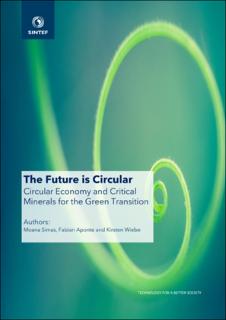| dc.description.abstract | The transition towards a net-zero economy will require a large-scale implementation of low-carbon technologies. Concerns have been raised whether the availability of minerals will be a bottleneck for the green transition, prompting discussion about the opening new mining frontiers for supplying these minerals. One of the most controversial options is the exploration of minerals in the deep sea. Critical minerals are those that have a significant economic importance and that have risks to their supply. Many low-carbon technologies currently depend on these critical minerals. The total demand for minerals and whether critical minerals will become a challenge for the green transition depending on the path we take. The technological choices for decarbonisation in the coming decades are highly uncertain and depend on a wide range of factors such as prices, resource constraints, social and environmental standards, and innovation and technological development. How each of these factors will develop in the medium and long term and how they will interact with each other cannot be predicted. This report looks at the mineral demand for a net-zero emissions energy system, based on the technological decarbonisation path of the Net Zero by 2050 scenario developed by the International Energy Agency. It focuses on seven critical minerals for the green transition: lithium, cobalt, nickel, manganese, rare earth elements, platinum and copper. These are among the most discussed in studies on mineral bottleneck for new energy technologies and for which demand is expected to grow many-fold. This report looks at the challenge of mineral availability through different perspectives. First, how will technology choices and technology development in the next decades affect total mineral demand? Second, how can circular economy strategies reduce the demand for minerals and also increase the recovery and use of recycled minerals? And finally, what does it mean to have a responsible supply of minerals for the green transition? | en_US |

